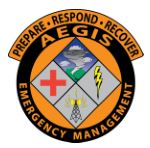.png)
By Jim Sharp

People ask, “What can we do to fix it?” I don’t believe most of those people are really interested in fixing the problem. Sadly, most seem primarily interested in finding a way to use whatever the most recent tragedy is to either further their own agenda, blame their opponents’ policies, or both. It’s been less than a month since the attack at Umpqua Community College in Oregon, almost three years since the atrocity at Sandy Hook Elementary, and more than 16 years since Columbine, and we’re still bogged down in blaming “the other side.” Well, with kids in school I have a dog in this fight, so I thought seriously about what we could do to make school campuses more safe, and here’s my proposal:
Campus Marshals.
Institute, under the Department of Homeland Security, a Campus Marshal program similar to the Air Marshal program.
• Air Marshals provide deterrence (they blend in with the passengers, so a potential attacker must take into account the possibility of armed response to their actions). Campus Marshals would provide deterrence the same way.
• Should an attacker penetrate the layers of airport security prior to boarding an aircraft, Air Marshals are the first (and final) line of defense for passengers against an attempted hijacking or other attack. Similarly, Campus Marshals would be the first line of defense for the student body against an attack.
• Since they would blend in with the student body, an attacker would not be able to target them for early elimination as they would a uniformed school resource officer or campus police or security officer.
• Air Marshals are trained to detect mannerisms, behaviors, and speech patterns that help them identify potential problems. Campus Marshals would receive that same level of training, enabling them to make the same judgement and decisions.
• With so many of our military veterans returning to civilian life and using their veteran’s benefits to go back to college, this seems like it would be an ideal coupling of workforce, environment, and necessity.
I know this is not “the” solution to the problem – it’s not even an entire solution, but I do believe it’s part of the solution – and a partial solution is better than none at all. If you had a child in kindergarten at the time of the Columbine attack, that child would today be old enough to be in college and would, sadly, face pretty much the same level of threat. To be sure, we’ve become much better at things like building design and campus-wide emergency alerts. Law enforcement response tactics have certainly evolved, and armed school resource officers are more prevalent, but that’s about it. At some point we have to stop talking and debating and arguing and blaming. At some point we have to decide that, while “having a discussion” is worthwhile, when the discussion has been ongoing for 16 years it’s run its course. At some point we have to actually do something. We can do this.
I know the arguments...
• You can’t really deter someone who is determined to commit such an act. In many cases that’s true, but it doesn’t mean we shouldn’t try. Police on the streets obviously don’t “deter” all of the crime, but no one’s talking about taking cops off the roads and out of the neighborhoods.
• Most school or campus shootings happen in less than two minutes, and the current average law enforcement response time is about five minutes. If you can’t get the response time down to less than two minutes, you won’t do much good. Those figures are accurate, but to students and faculty huddled behind barricaded doors, any reduction in response time is a Godsend.
• Air Marshals don’t fly on every flight. And...? Hire enough Campus Marshals to cover the campuses in the program.
• That would cost a ton of money. Sure it would. We spend more public money in this country on crap (and by “crap” I mean peripheral or tertiary programs that have little or no relevance to real life, and by that I mean crap) than the GDP of some smaller countries. If we can’t, or if we chose not to find and divert some of that money to an immediate real-world problem then we deserve our fate. Shame on us.
• What about elementary schools, middle schools and high schools? True, you would not be able to have a Campus Marshal blend in with the student body in those environments (21 Jump Street, for those old enough to remember, was not a documentary), but they could be embedded with the faculty or support staff.
• But it will take a year, maybe several years, to get the program up and running. Then I guess we’d better get started, right?
We’ve been talking about the problem long enough. I’m not suggesting we stop talking about it, but I am suggesting that, while we continue to talk and debate and discuss (and point fingers, and place blame), we also take action. We can do this.








